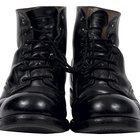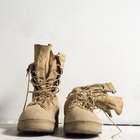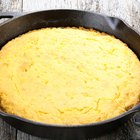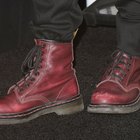Sailors, explorers and working men prized oilskin fabric for centuries for its waterproofing qualities. Lewis and Clark actually relied on oilskin bags during their historic trek across North America. Though modern waterproofed fabric is lighter than an oil and wax-soaked garment, some folks still prefer oilskin for its undisputed durability. If you have an oilskin that is no longer waterproof or have an item that you would like to turn into an oilskin, you can do just that with a few common ingredients.
Place the burner on a level, fireproof surface outside.
Fill the pot with water and bring it to a boil, then place the mixing bowl on top of the pot. The mixing bowl should create a double boiler. Ensure it sits securely enough so it will not spill, yet its bottom is not touching the bottom of the pot.
Add 1 qt. linseed oil followed by 2 lb. beeswax shavings to the mixing bowl.
Stir the oilskin wax occasionally until all of the beeswax has melted into the linseed oil.
Related Articles

How to Soften Leather Jackets

How Should I Protect My Lambskin ...

How to Protect a Leather Jacket From ...

How to Apply DuckBack Oil on Duster ...

The Different Fabrics of Raincoats and ...

How to Windproof a Carhartt Jacket

How to Treat Doc Martens With Mink Oil

How to Treat Leather Boots With ...

What Is a Textile Motorcycle Jacket?

How Do You Clean Barbour Jackets?

How to Cook Soul Food: Cornbread ...

How to Remove Sun Damage on Rain Boots

What Oil to Put on Leather Coats

How to Make an Omni-Tech Jacket ...

How to Revitalize Leather Shoes

How to Clean Dr. Martens Suede Boots

How to Attach an Embroidered Patch

How to Get That White Wax Residue Off ...

What Is Canvas Fabric?
How to Cook Roast Beef in a Cast-Iron ...
References
Writer Bio
James McElroy began his journalism career in 2001 and his stories have appeared in newspapers around the world, including "The Columbus Dispatch" and "The Star-Ledger." He studied journalism at the E.W. Scripps Graduate School of Journalism at Ohio University in Athens, Ohio.